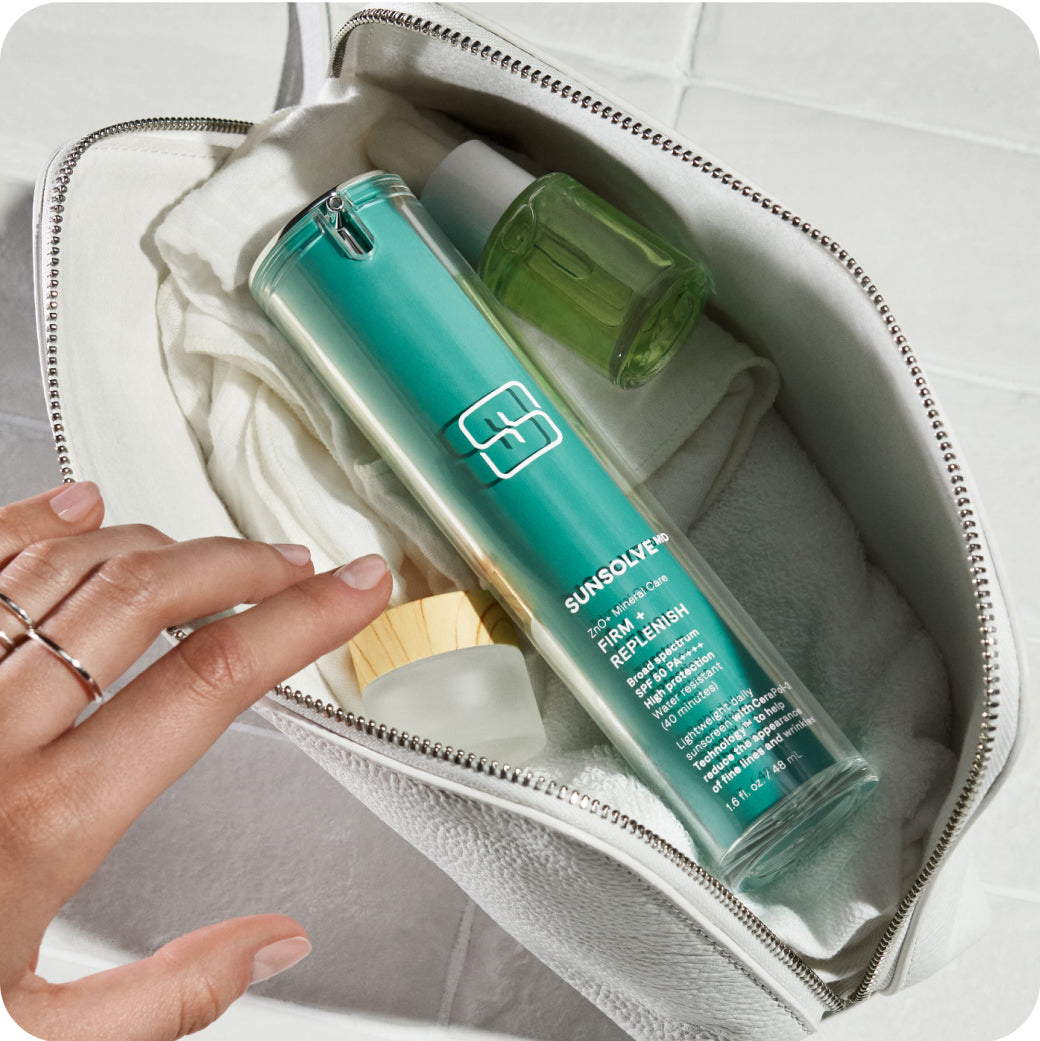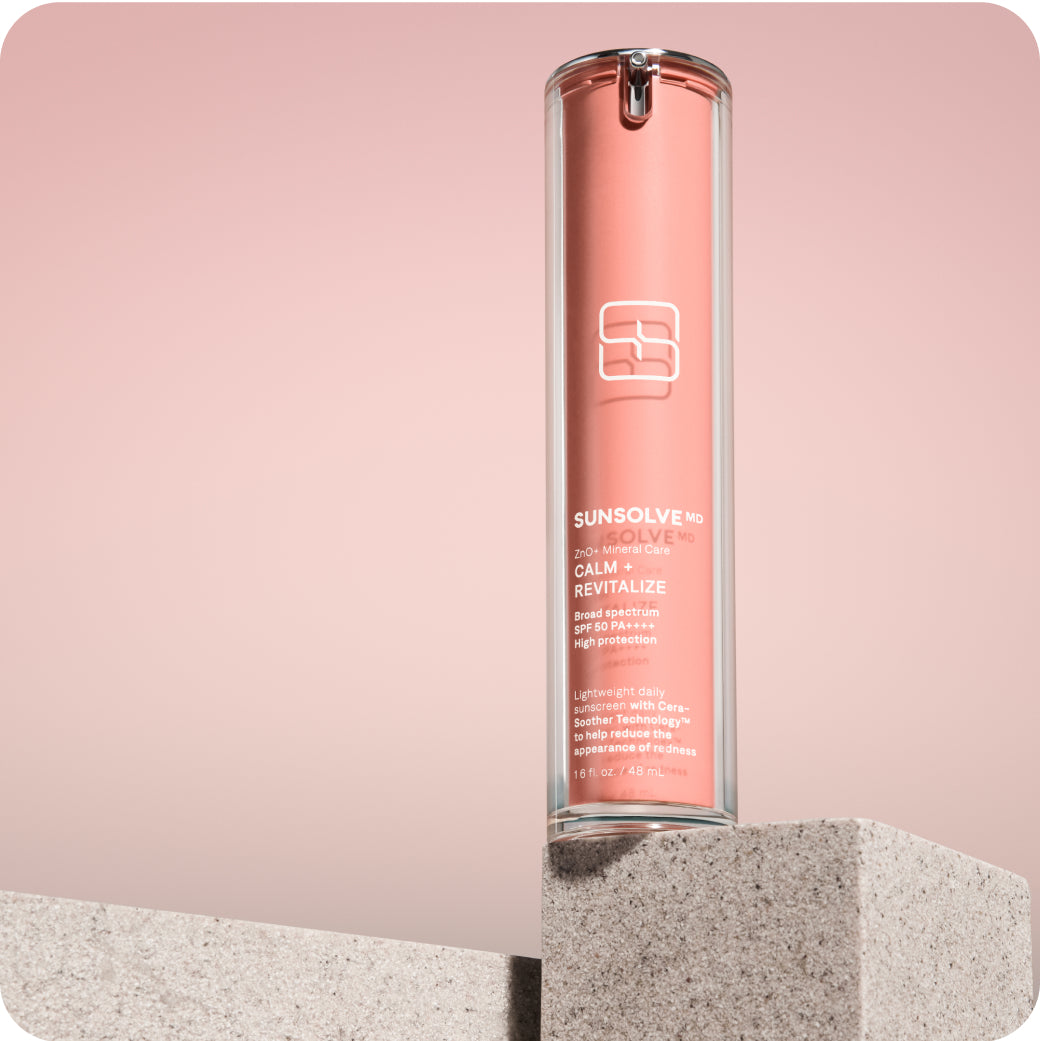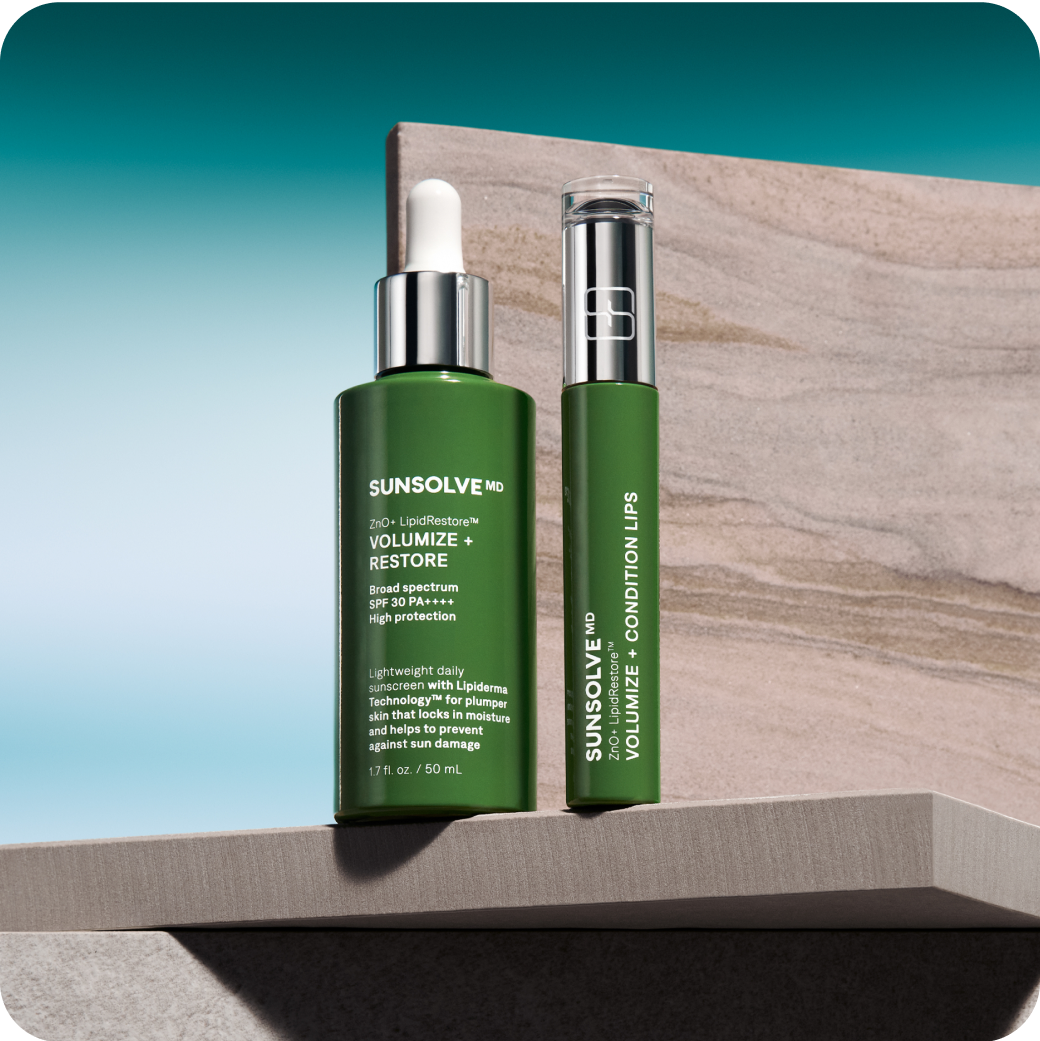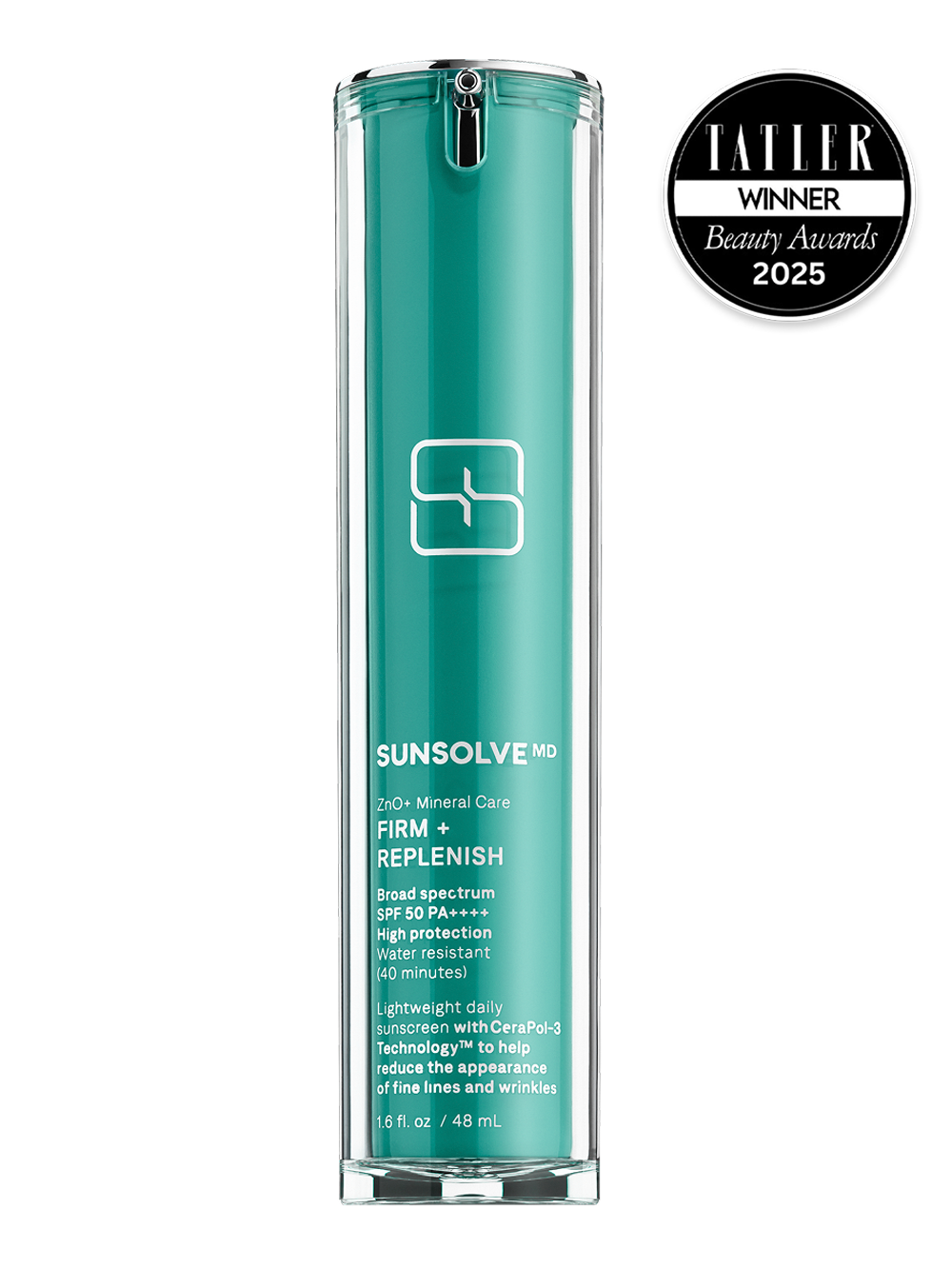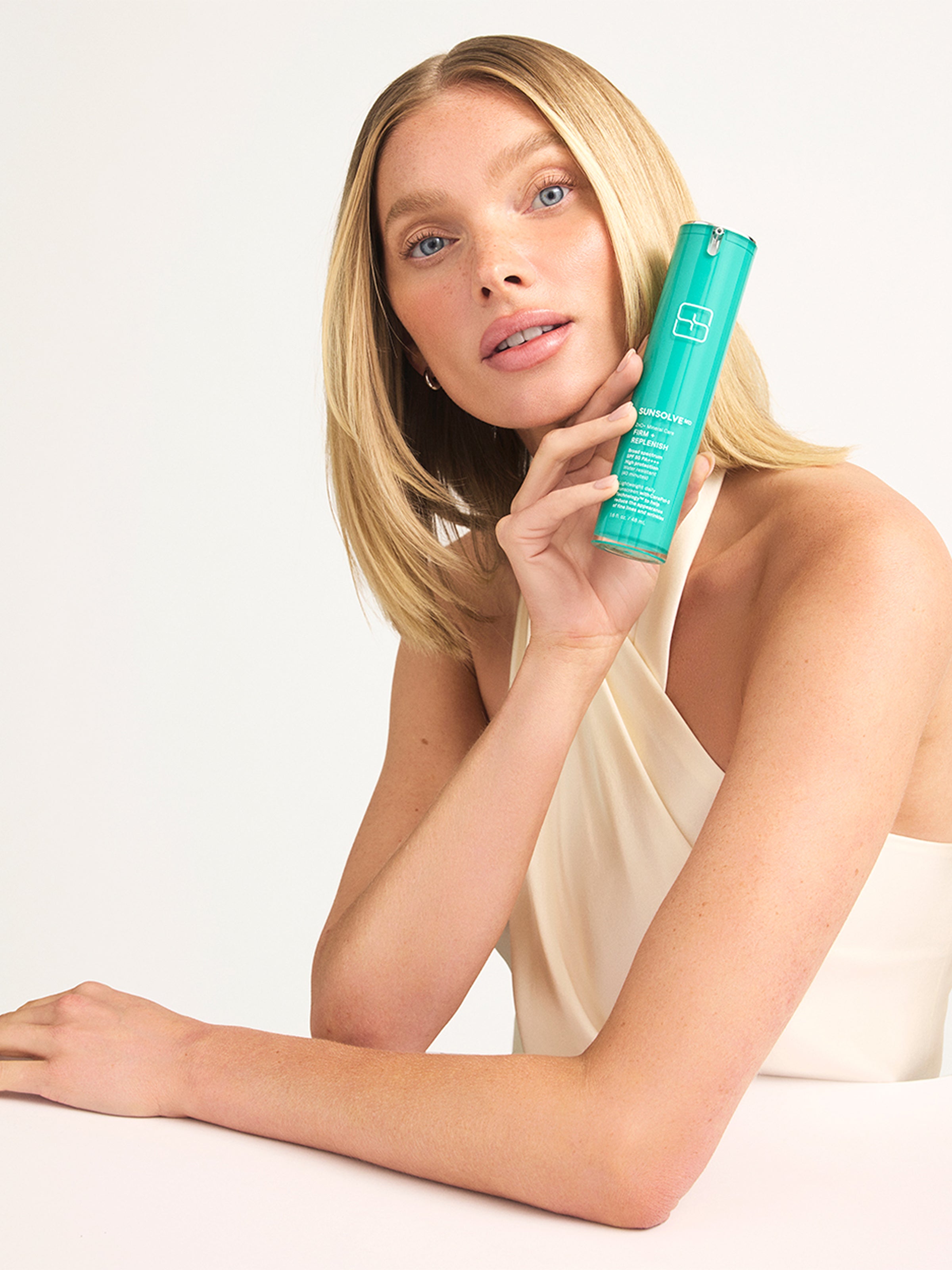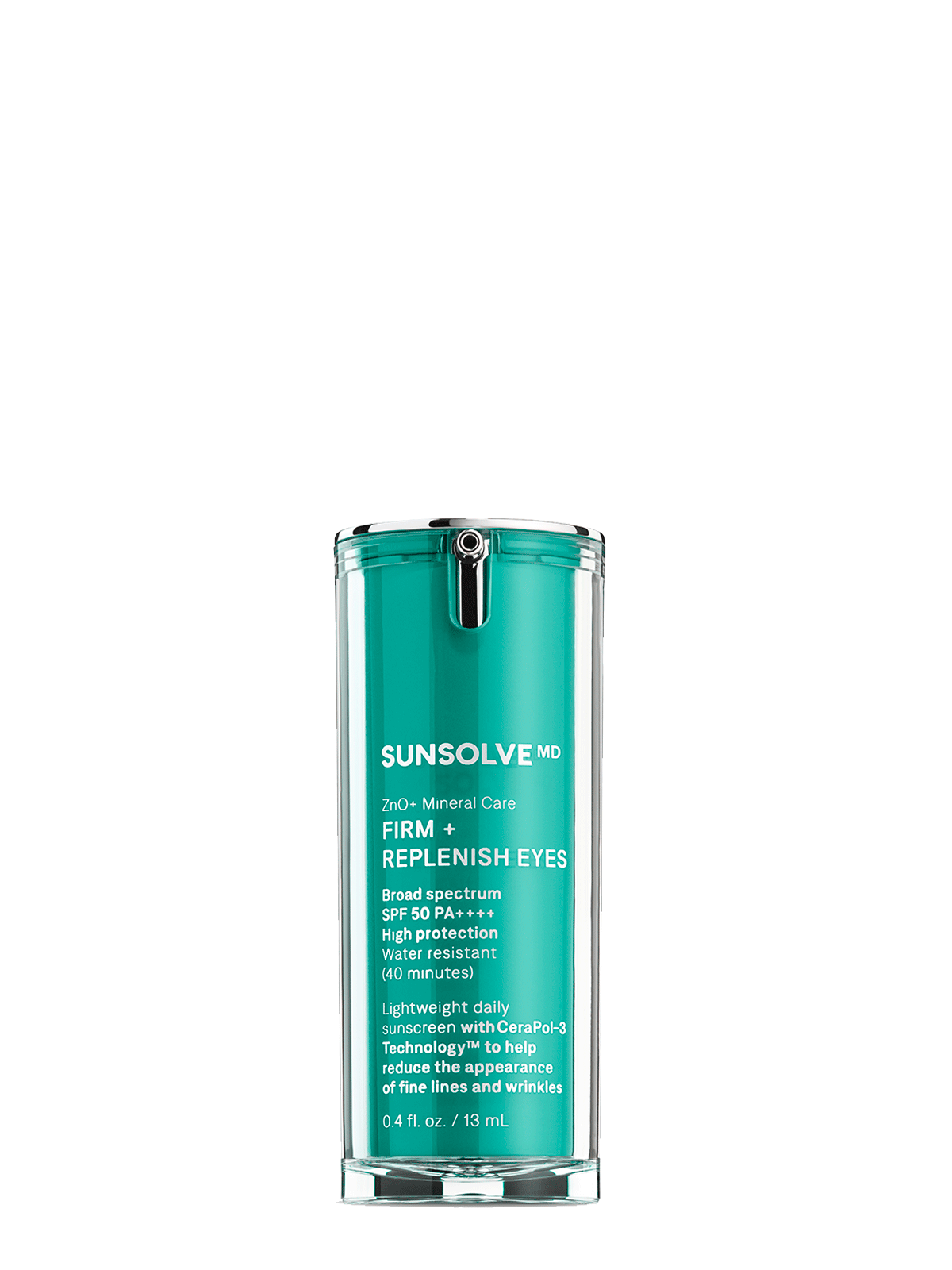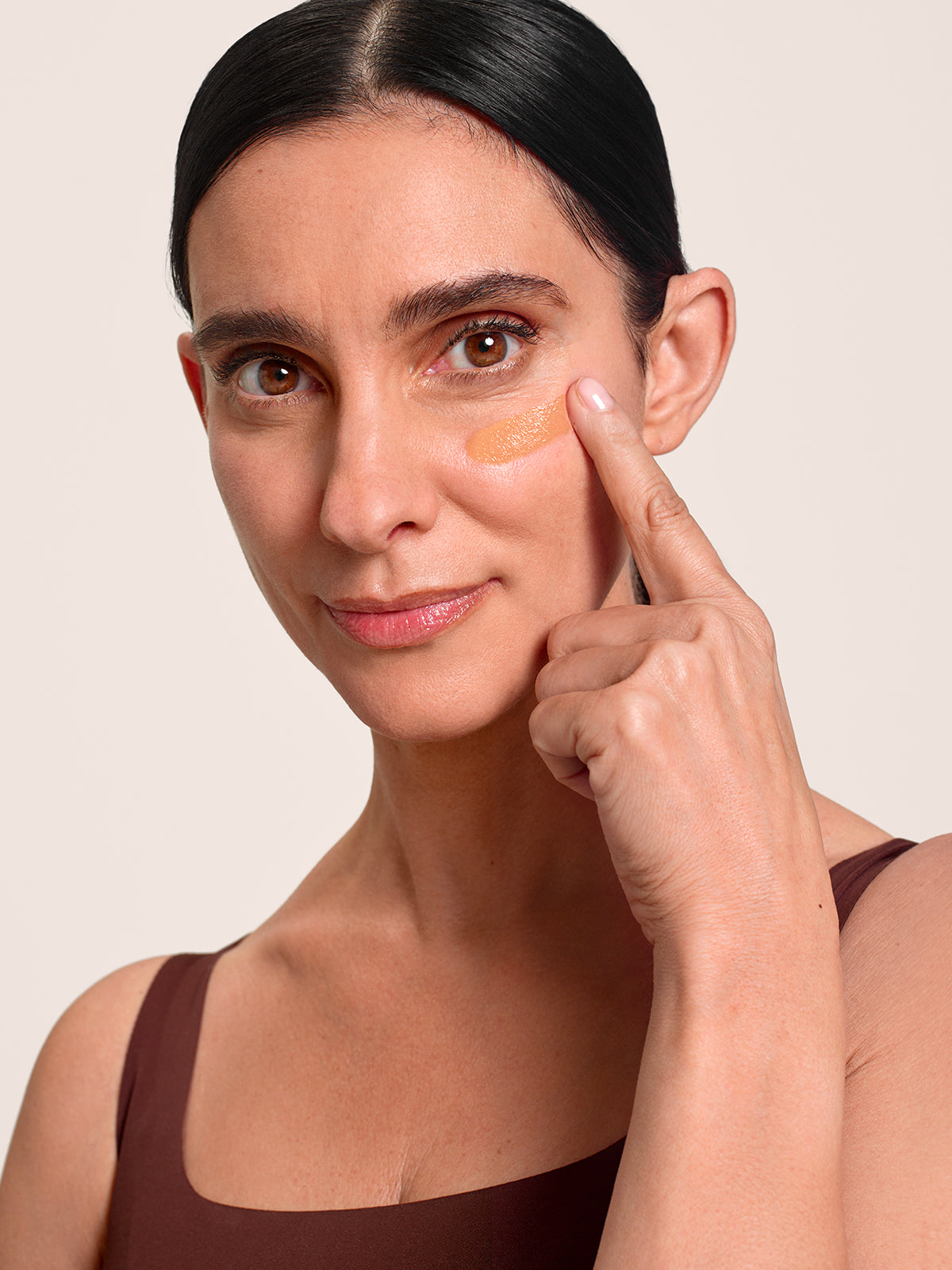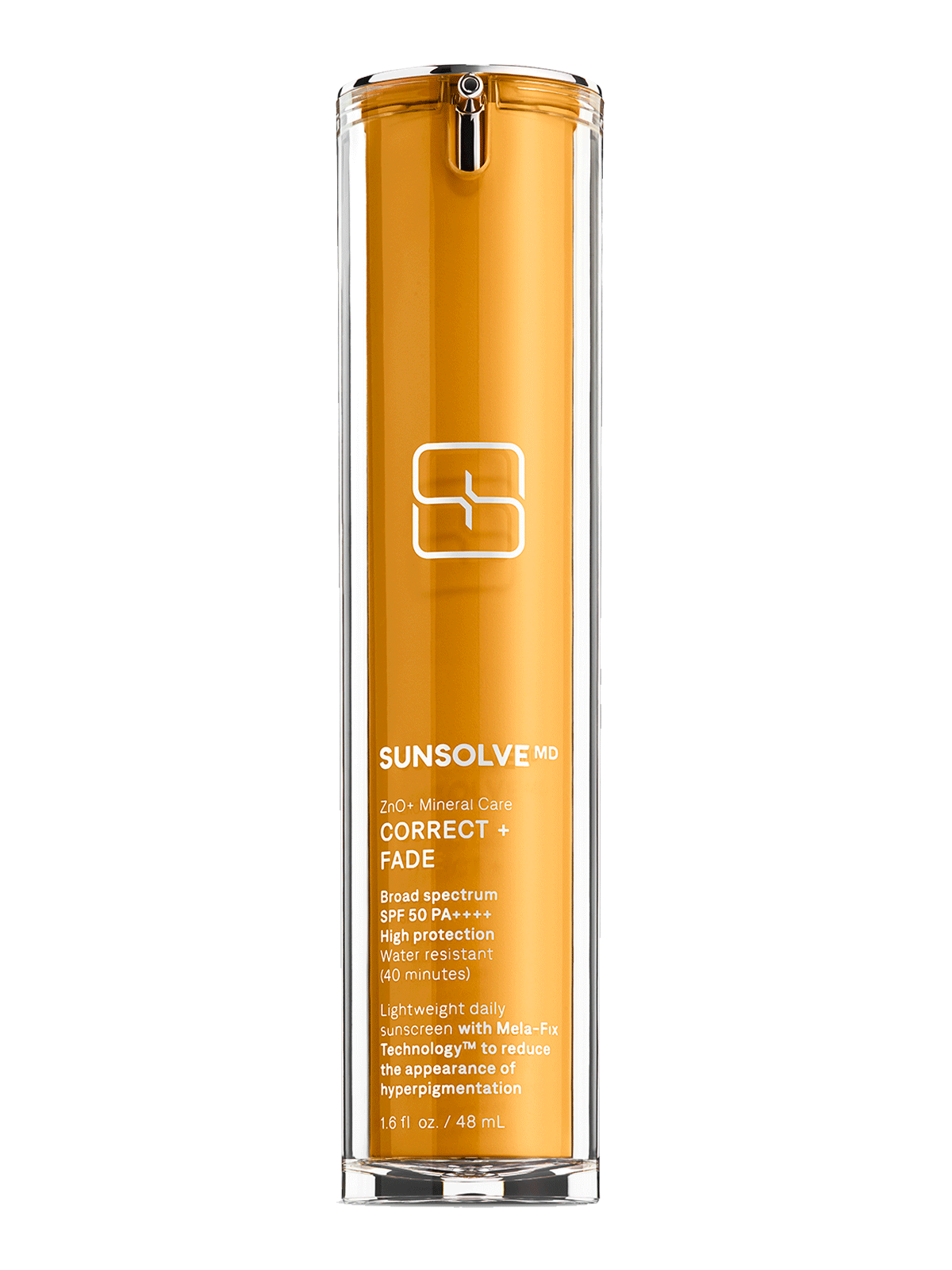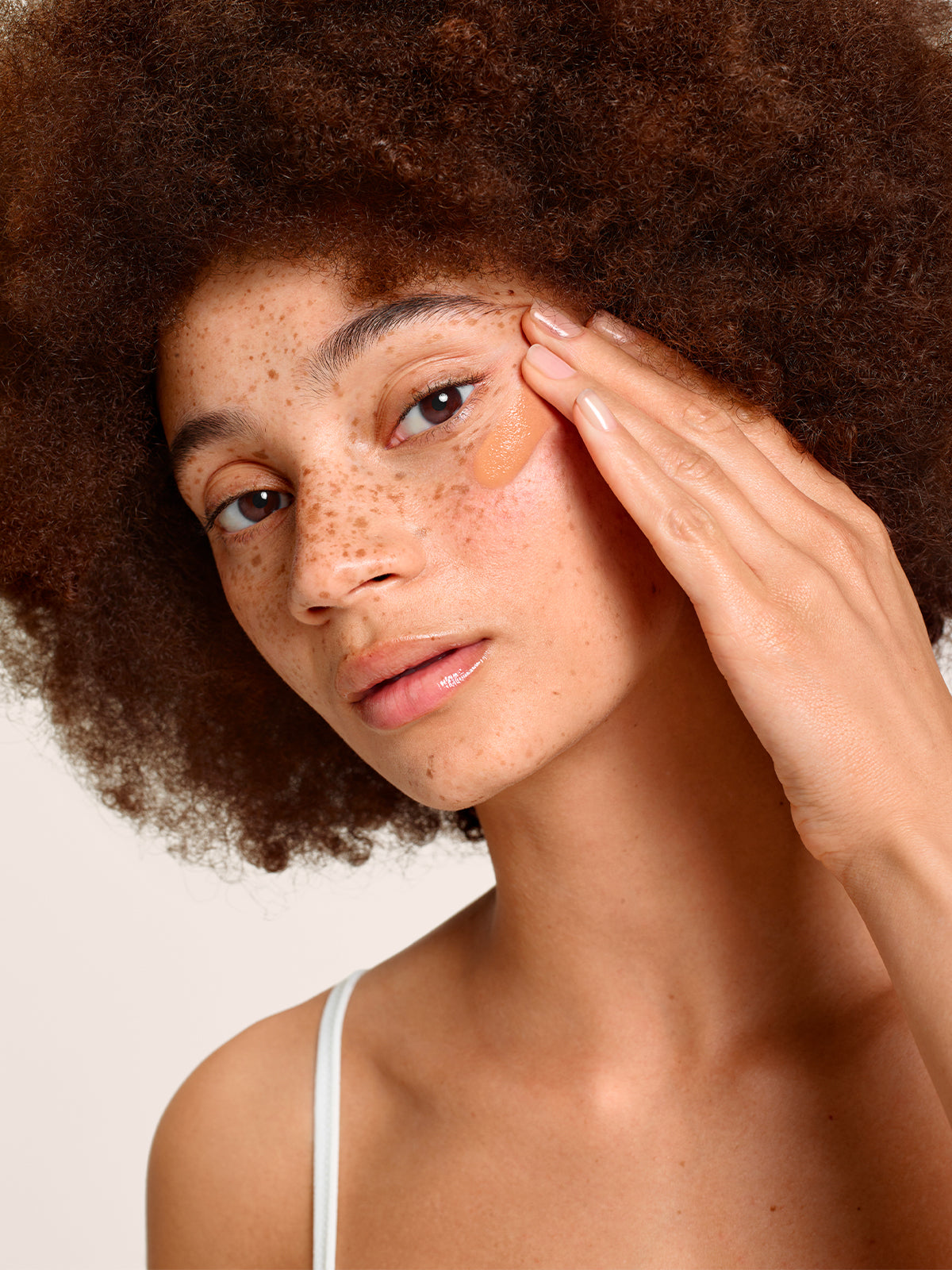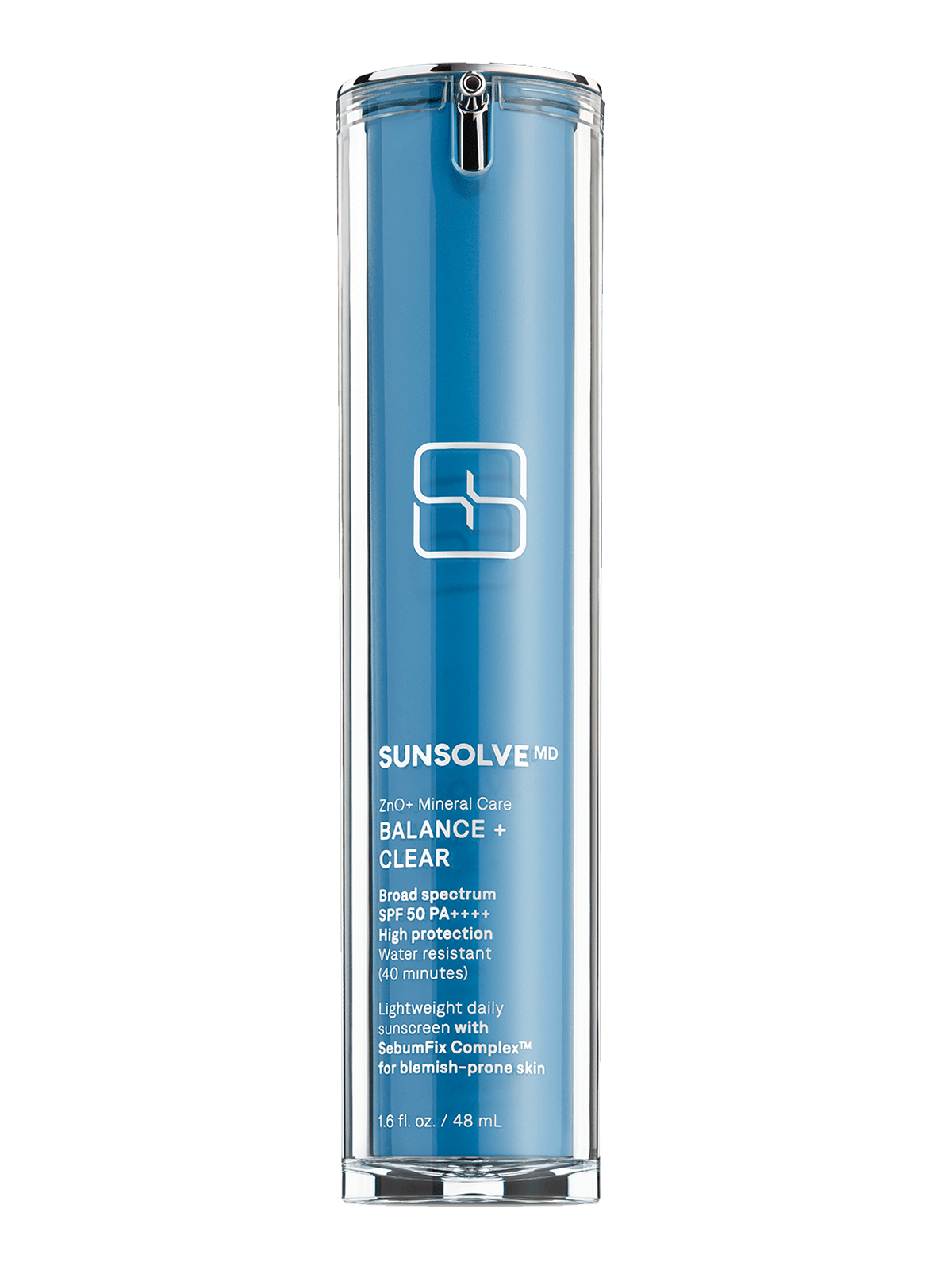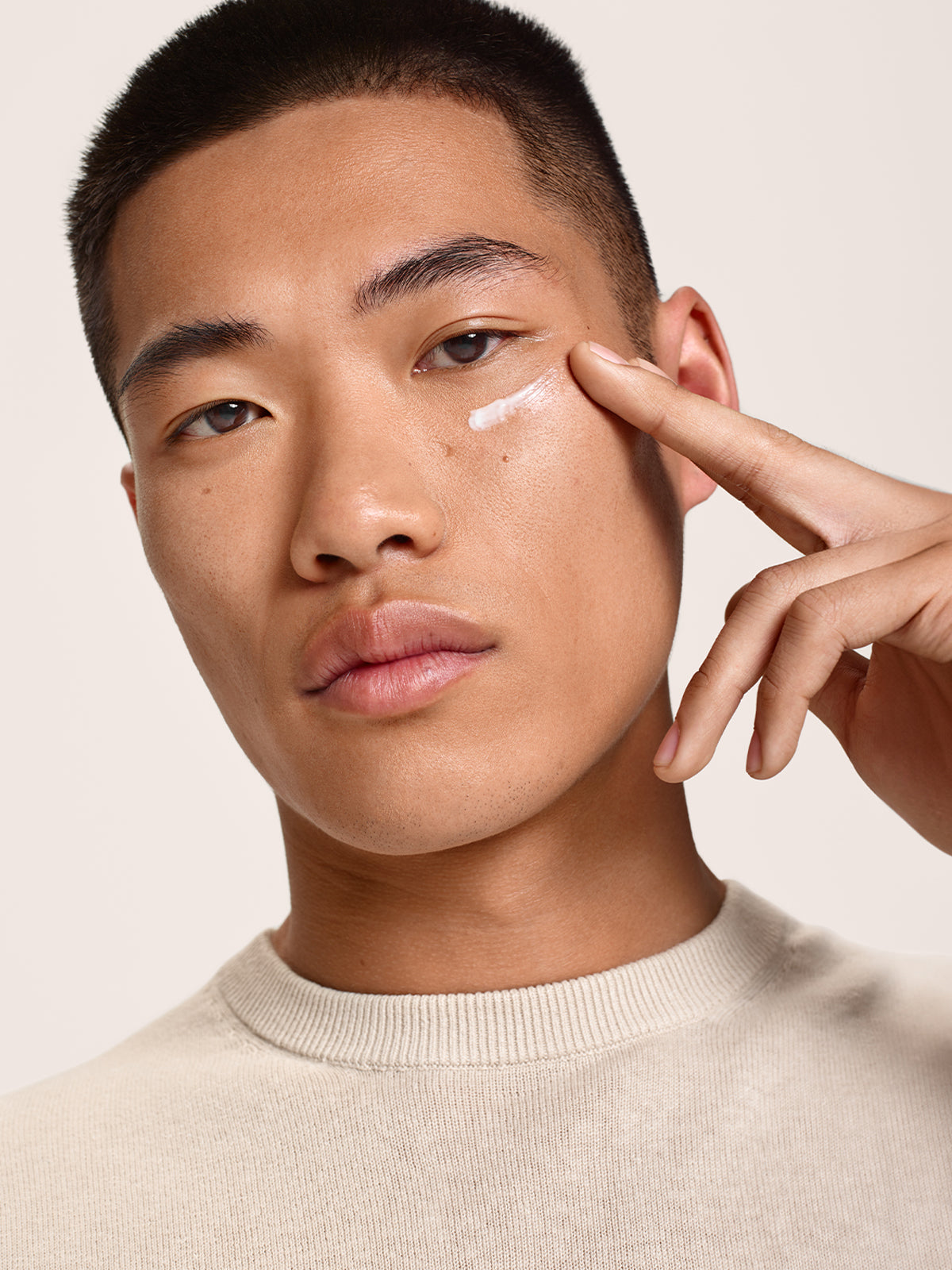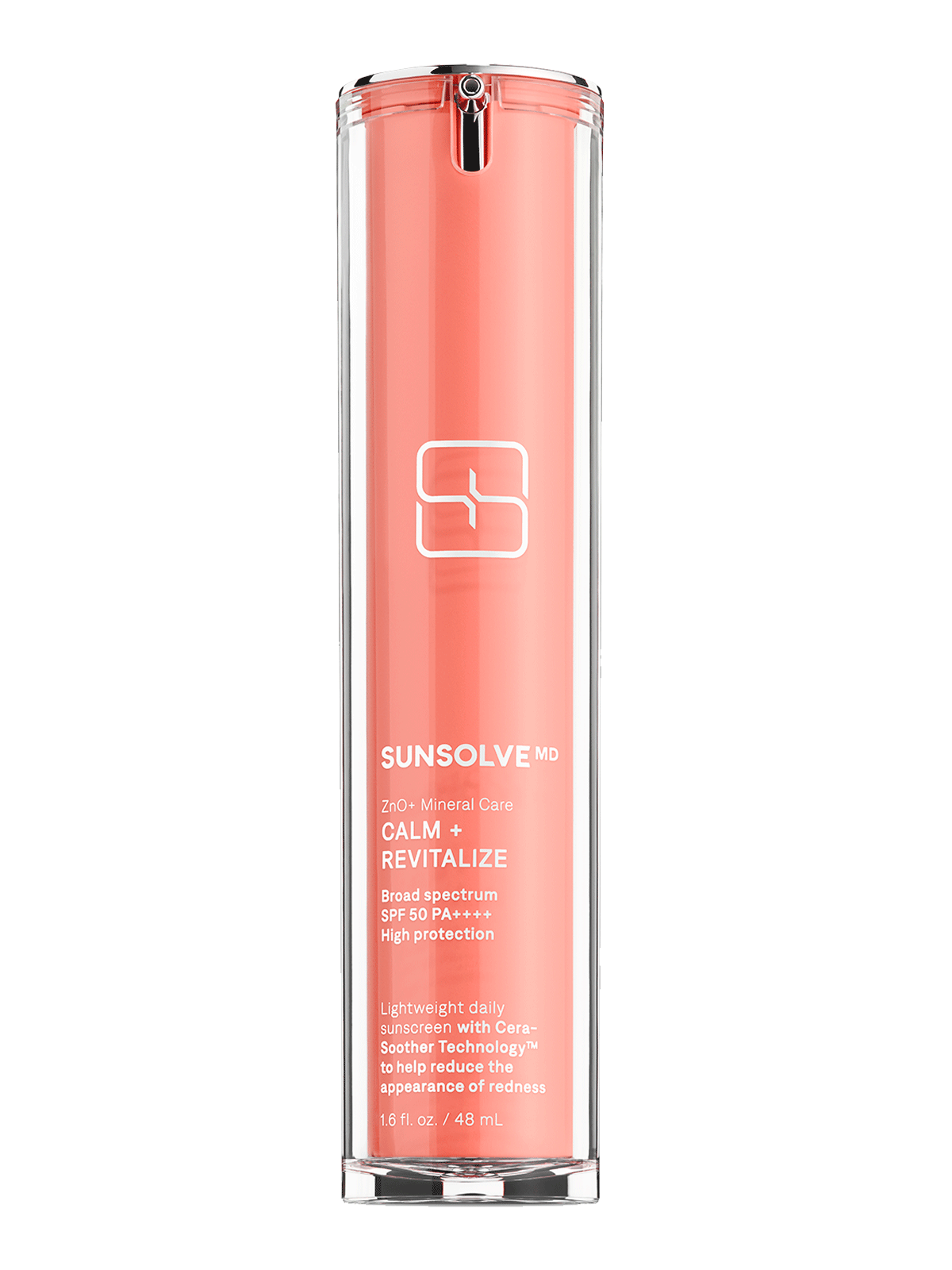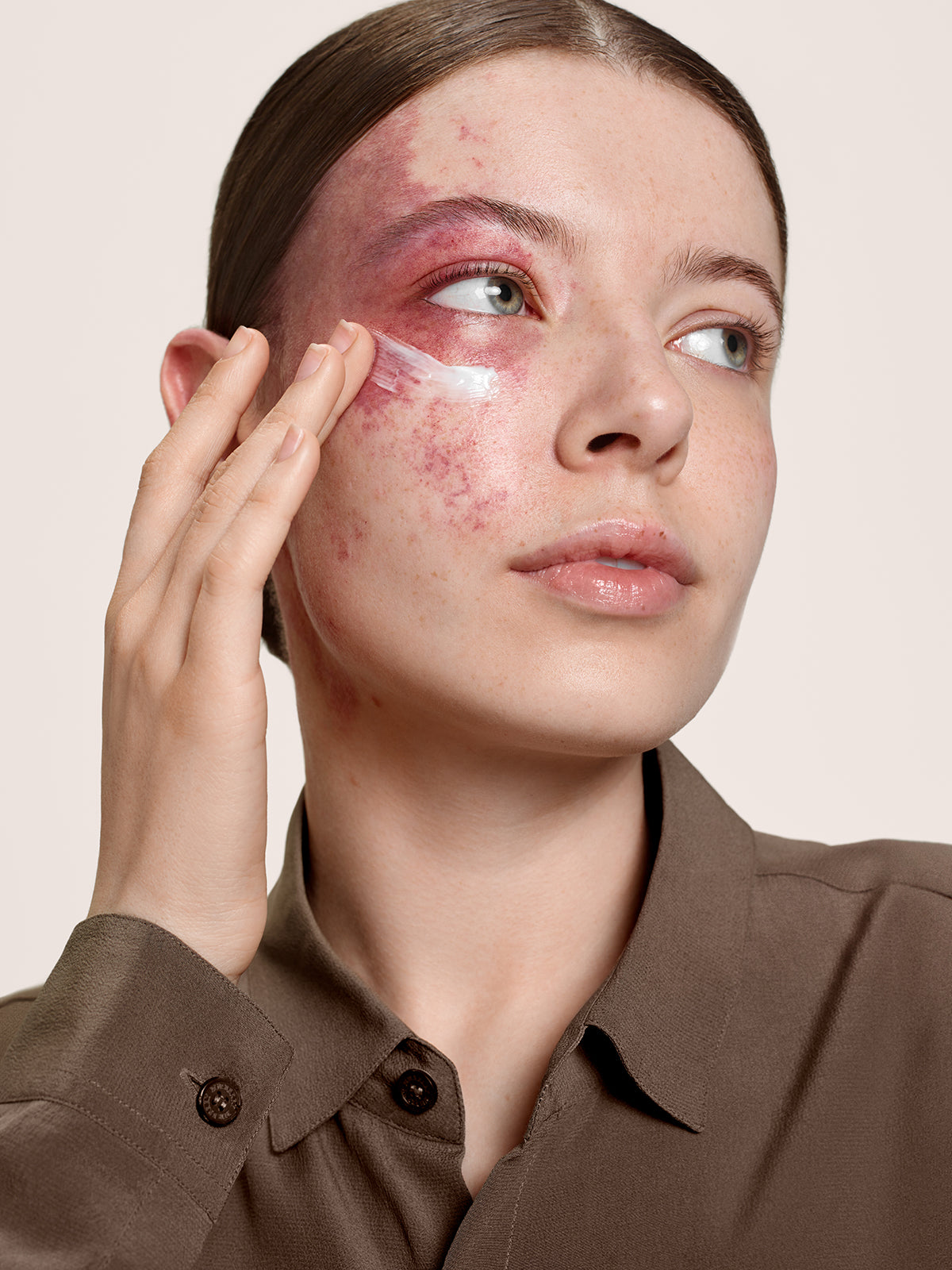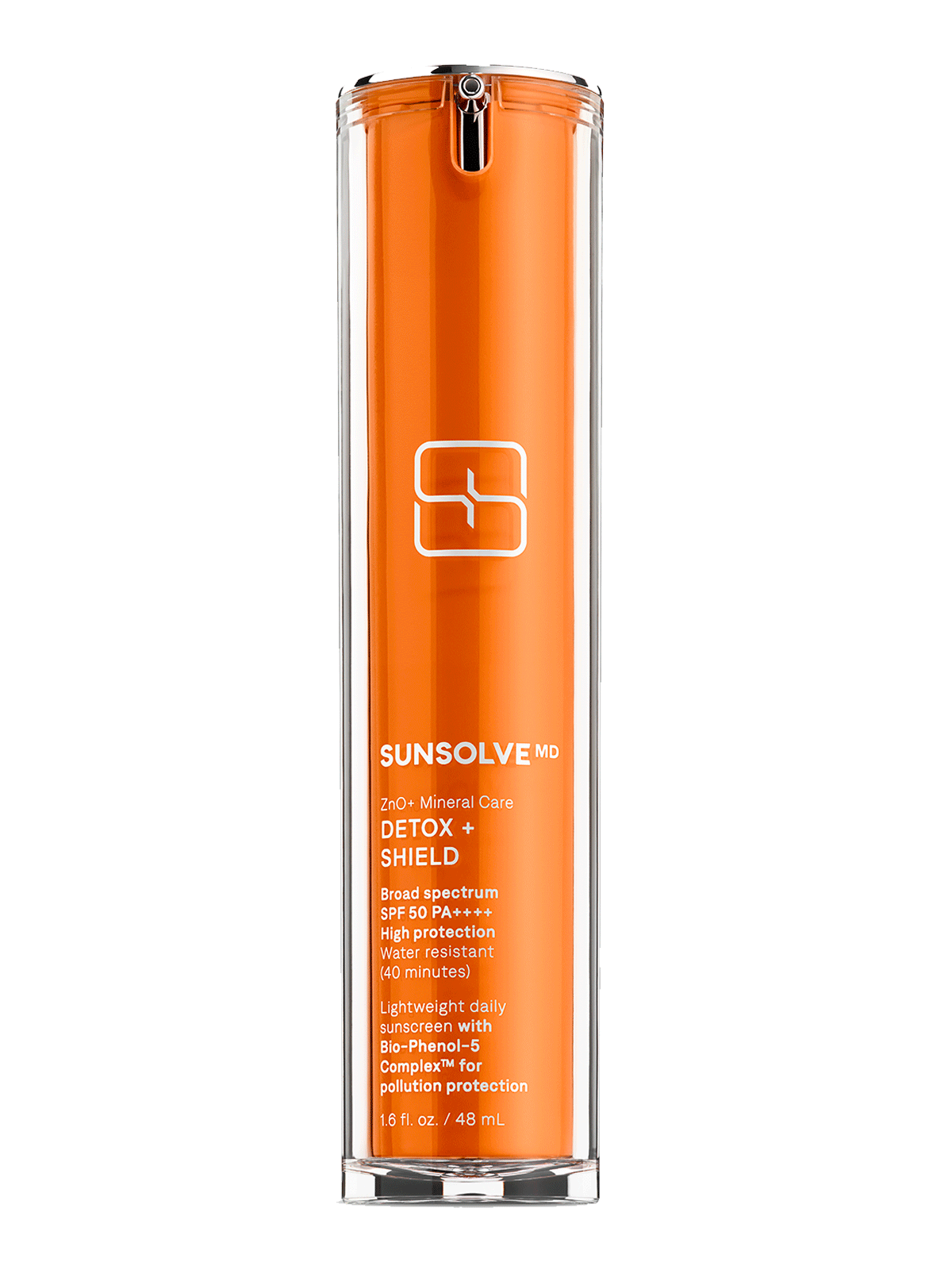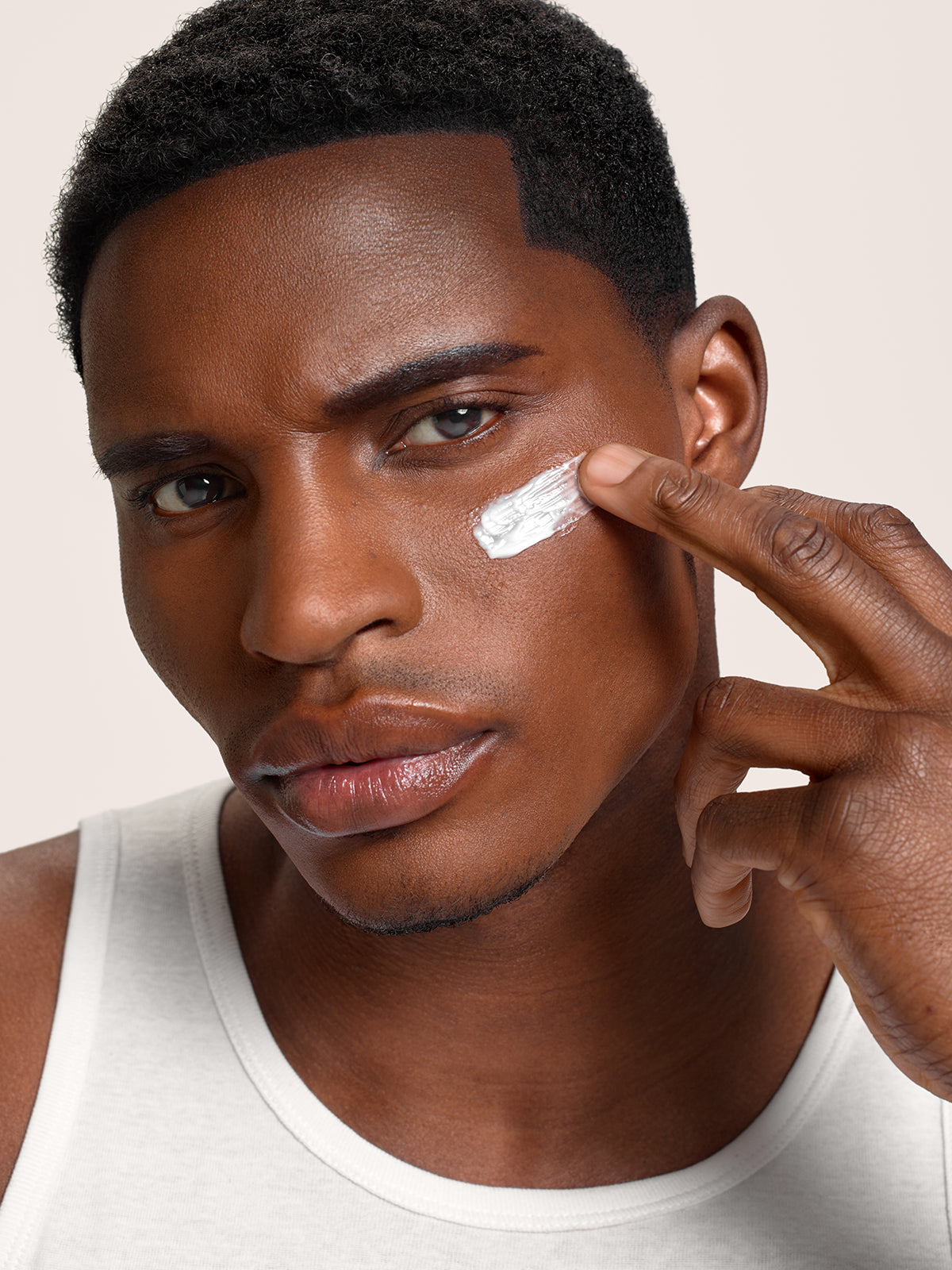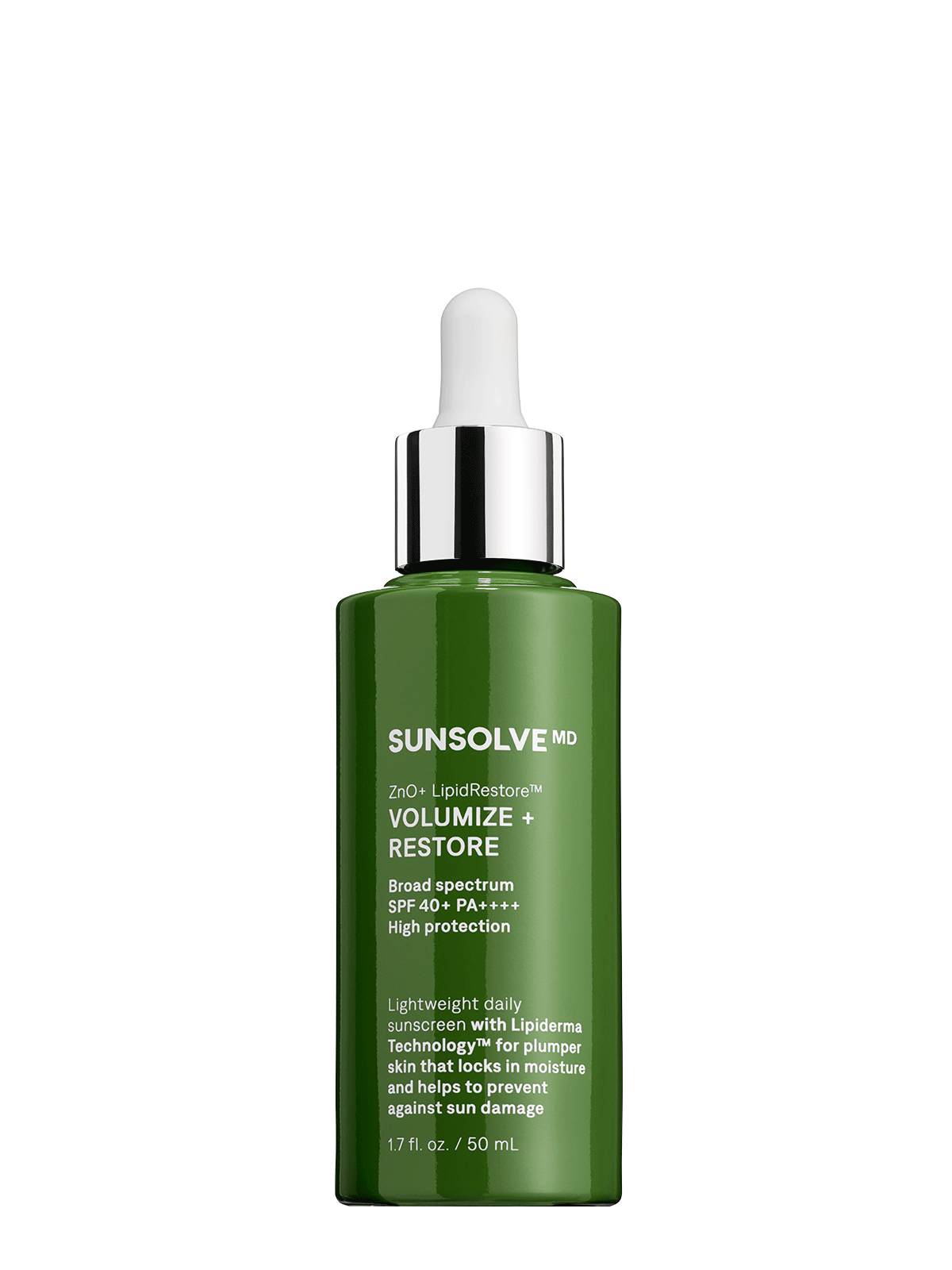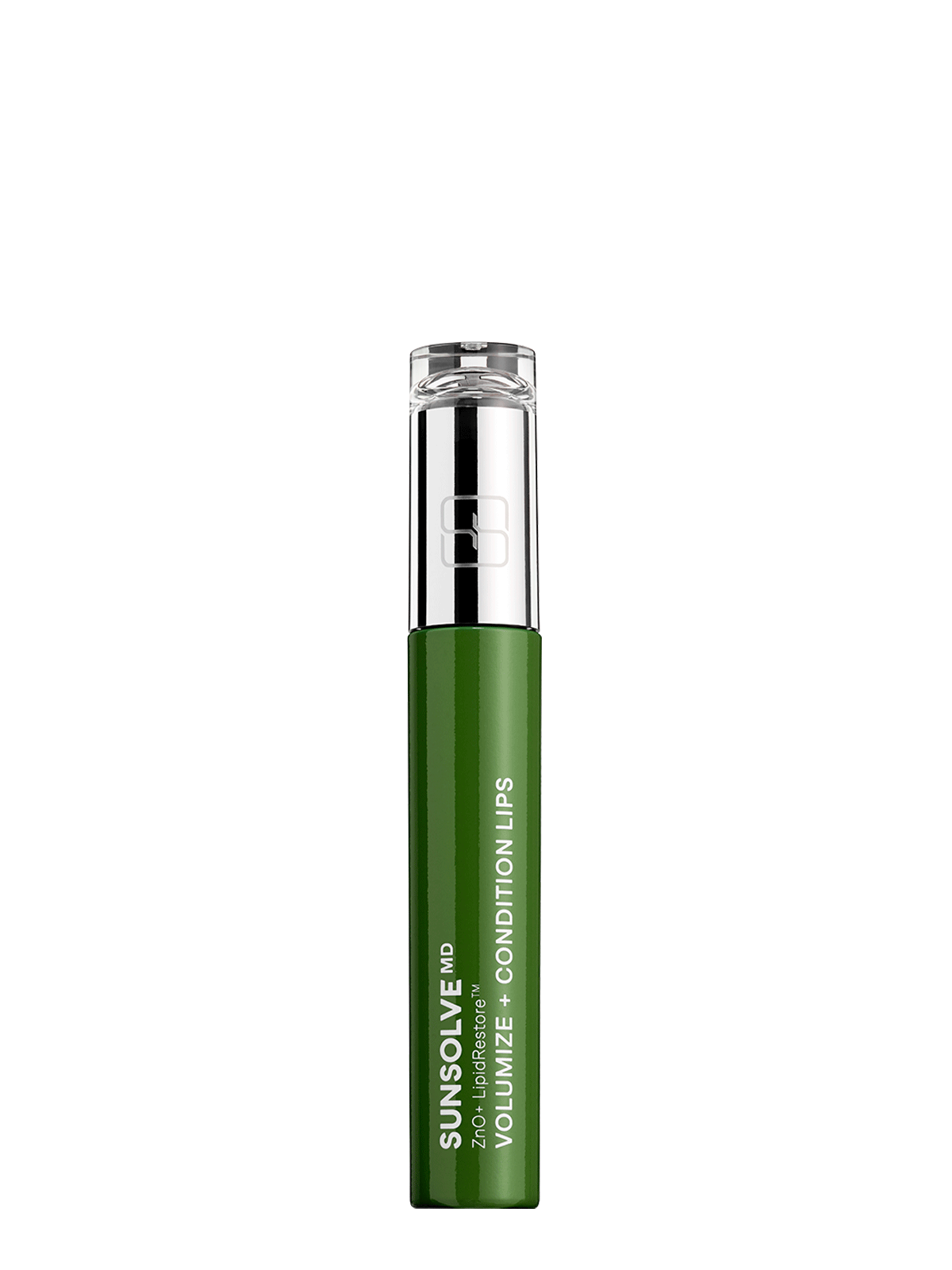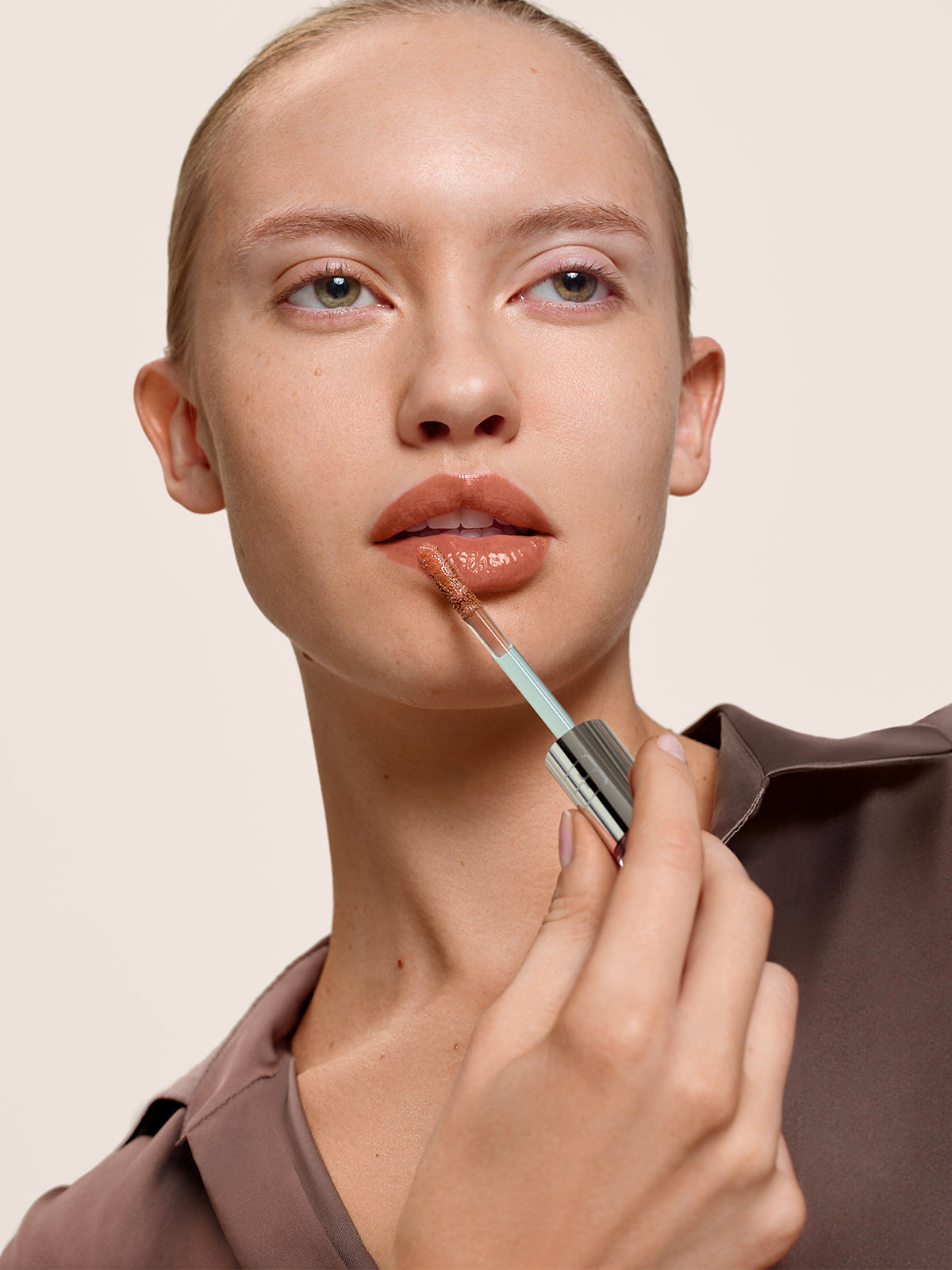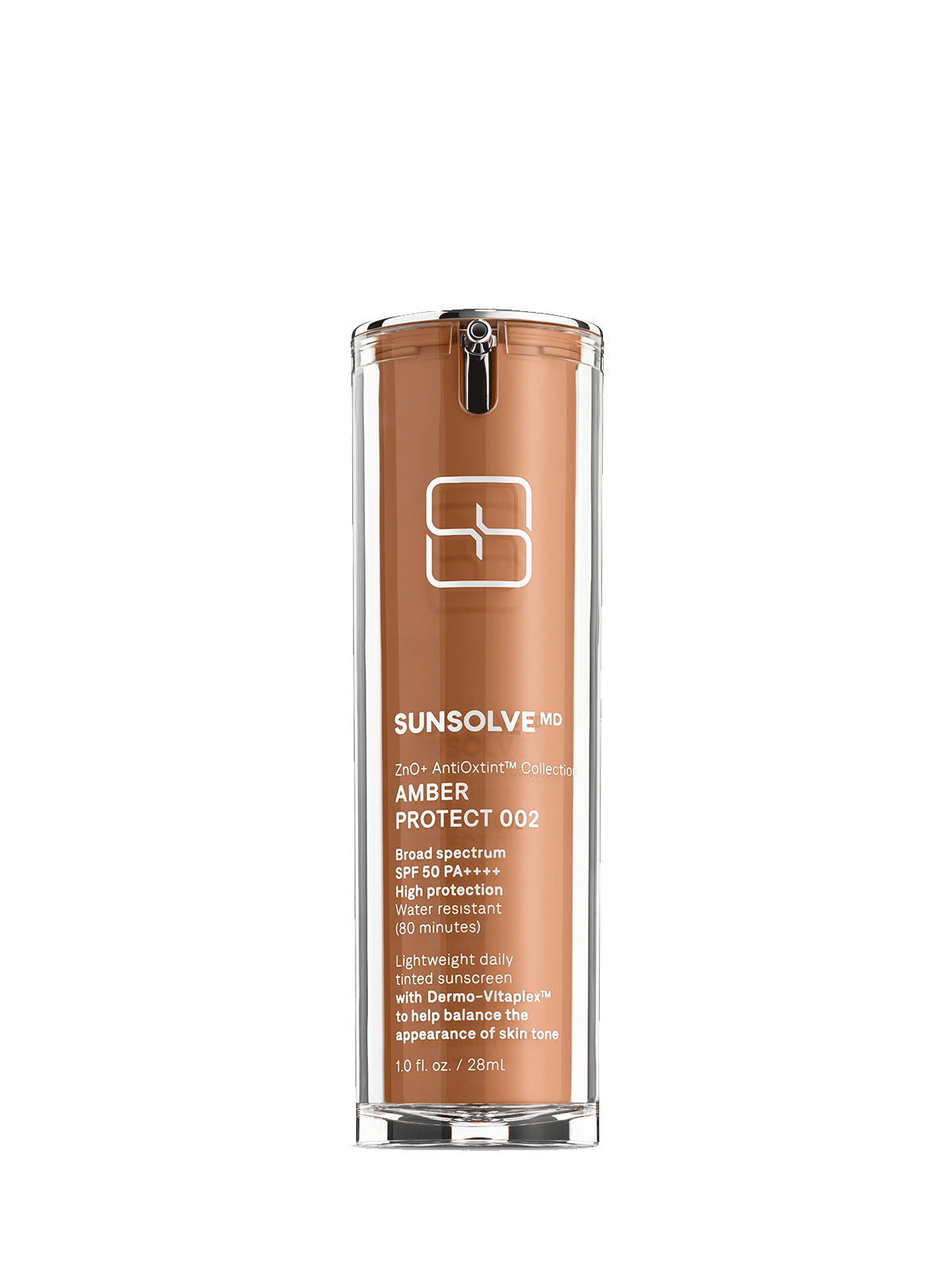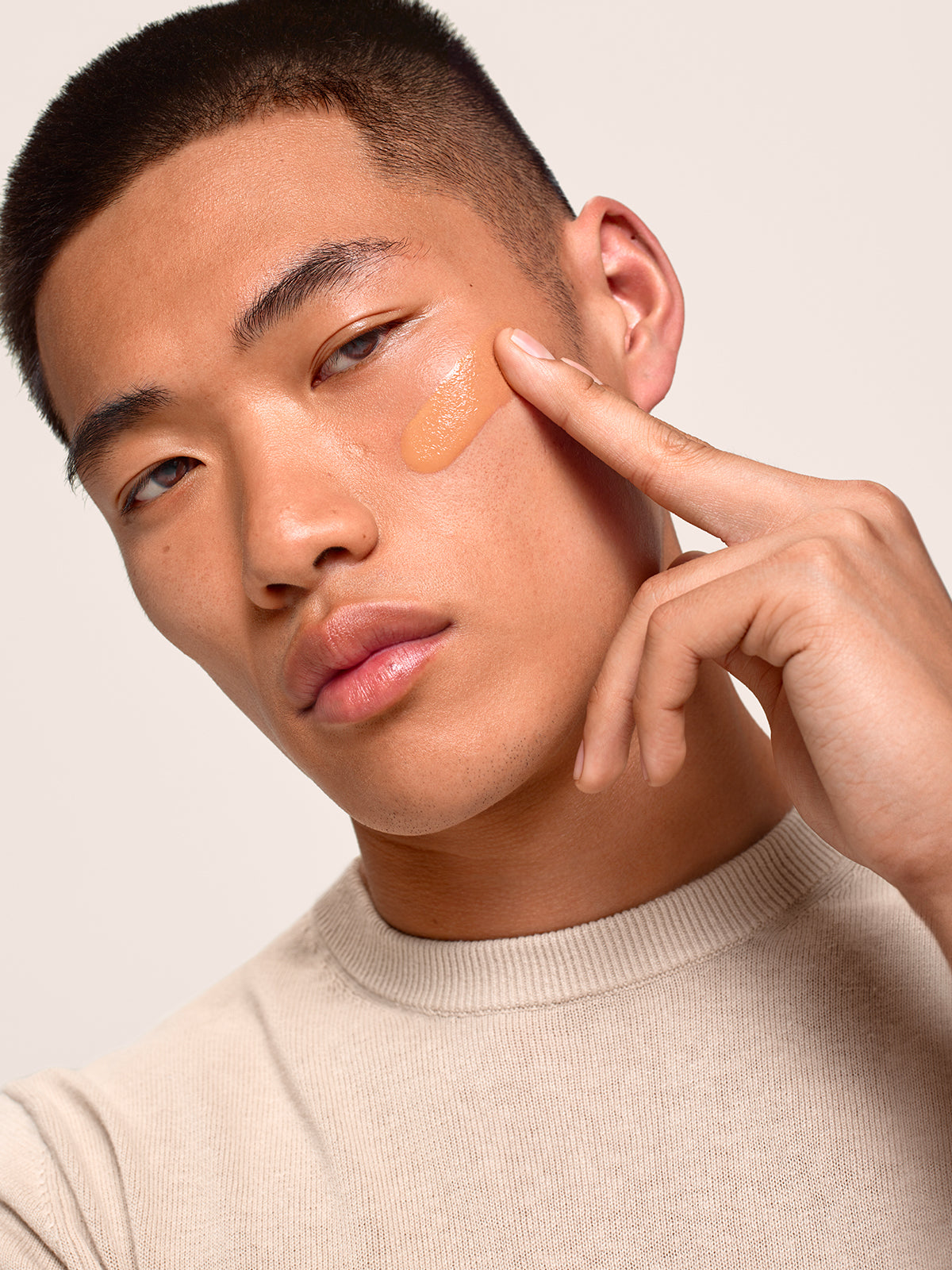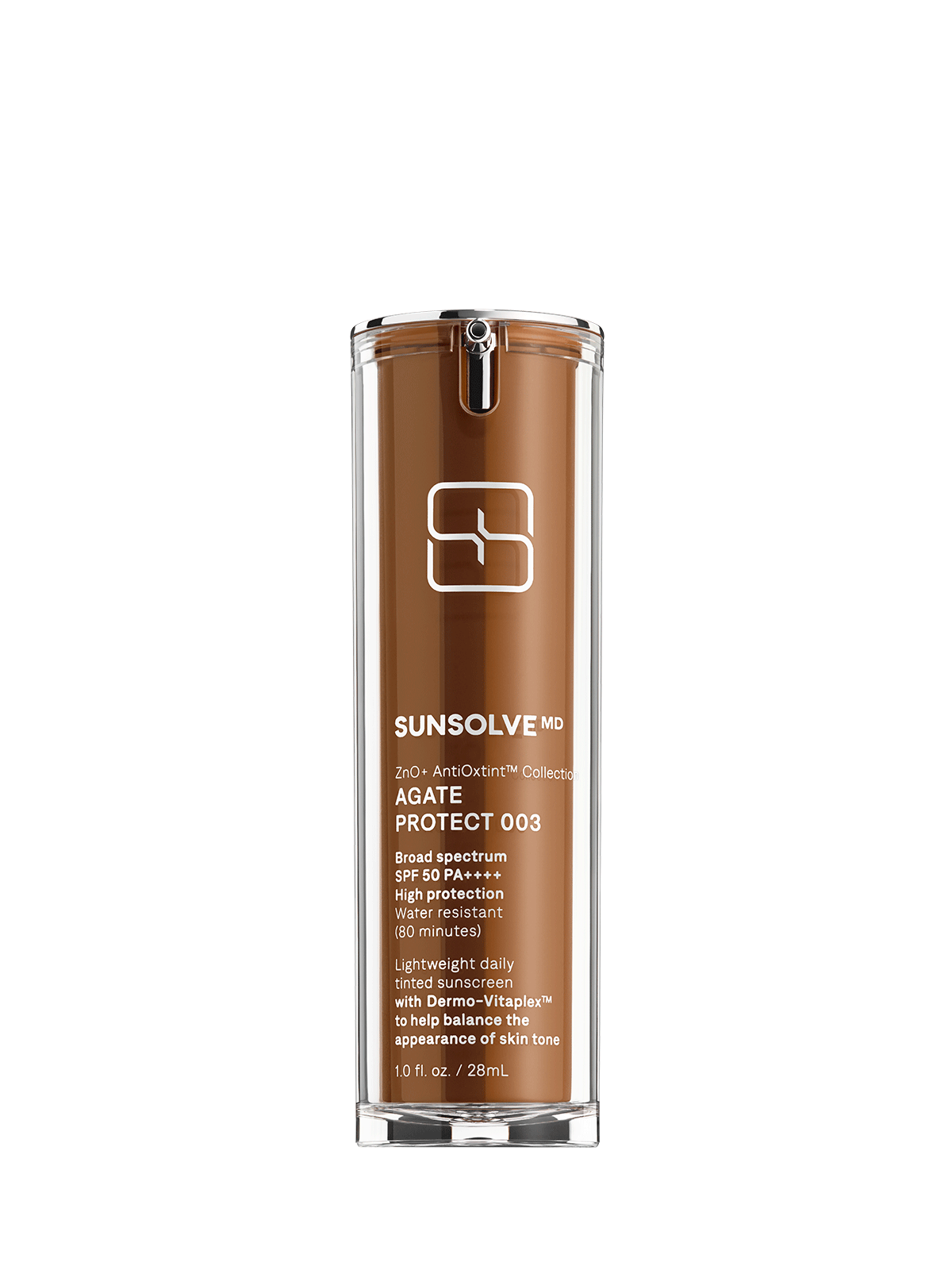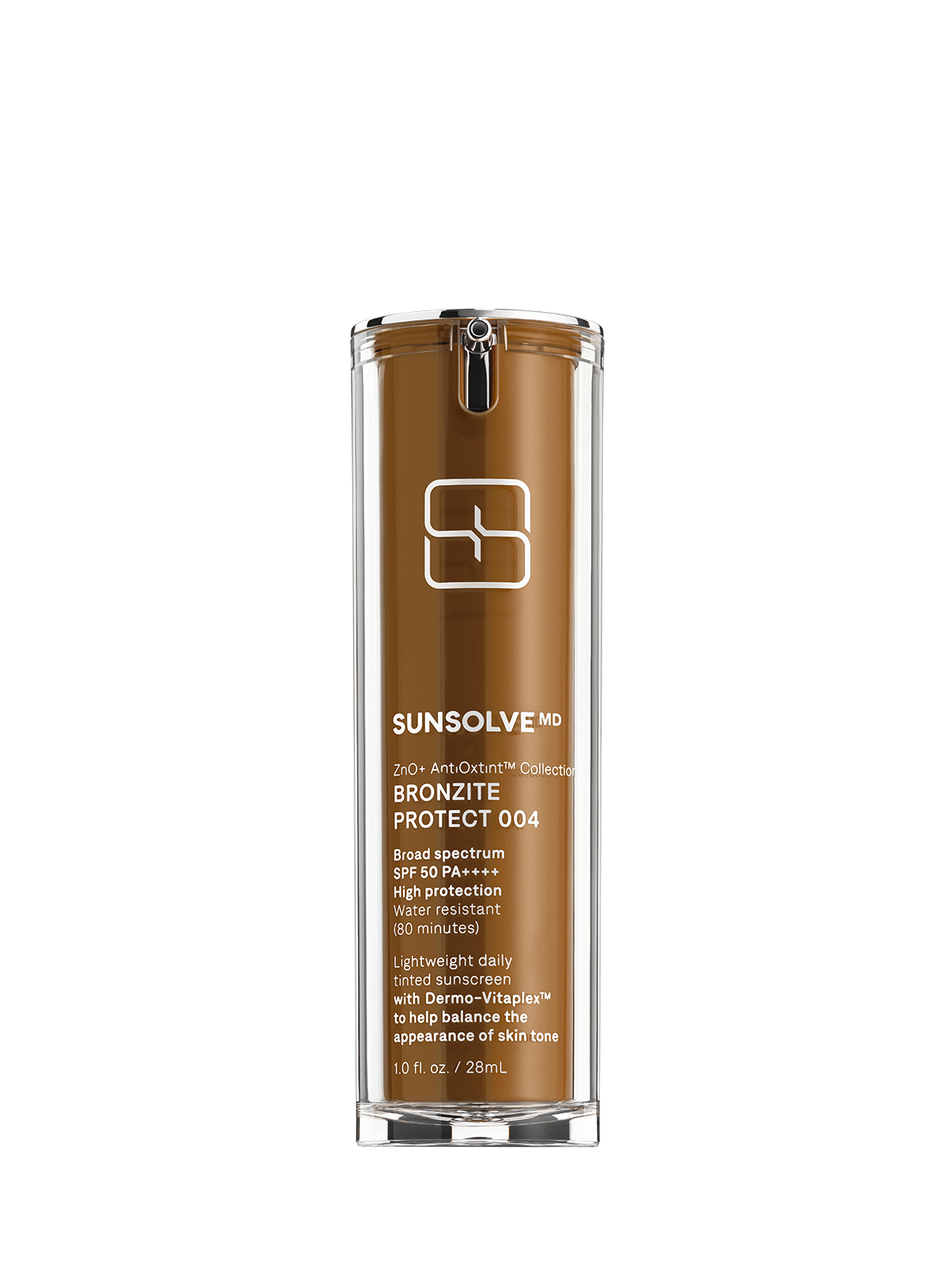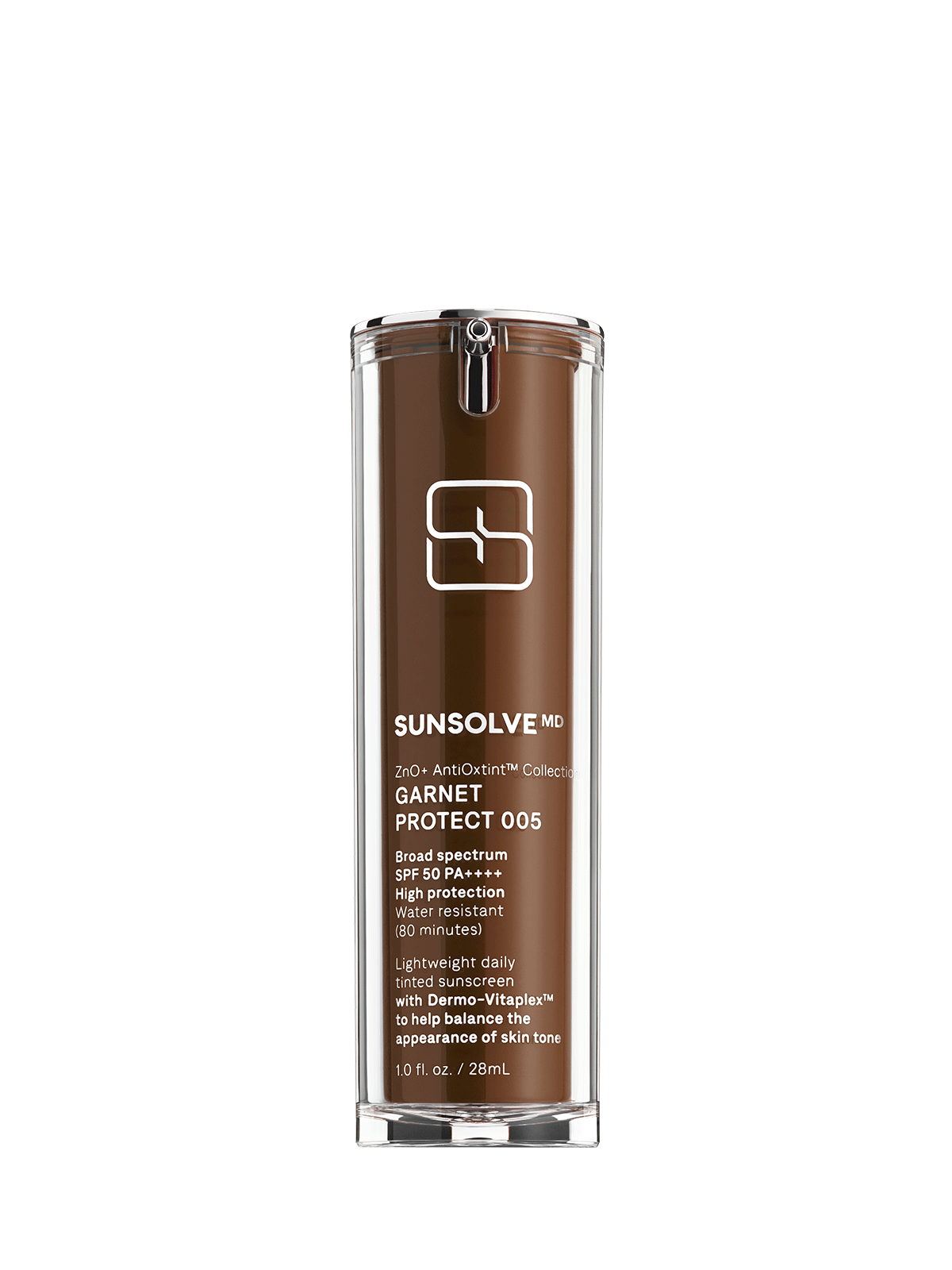
More Than Just Sun Protection: 5 Skin Concerns Mineral SPF Can Help Treat
The clinical benefits of using a broad-spectrum mineral SPF sunscreen are well documented. Incorporating a high-quality SPF into your daily skincare regime is paramount in maintaining optimum dermal health and preventing skin cancer.
But in addition to offering high-level protection against the damaging effects of UV (ultraviolet) radiation, sunscreen is proving to be an effective treatment for a variety of common skin conditions. As formulas have become more sophisticated many of the new generation SPF’s are emerging as skincare/suncare hybrids. Plus, as some actives make skin more susceptible to UV damage, it makes dermatological sense to choose products that solve both issues in one hit.
We dive deeper into 5 prevalent skin conditions. And how selecting the right SPF formula can help alleviate symptoms.
1/SPF and hyperpigmentation
What is hyperpigmentation?
Hyperpigmentation; also known as melasma; is characterized by visibly darker patches of pigment on the skin. It is a form of skin dyschromia typically seen on the face and sun-exposed areas such as the neck and hands.
What causes hyperpigmentation?
- Inflammation trauma
- Acne
- UV damage
- Fluctuating hormone levels in pregnancy
What’s the scientific process in the skin behind it?
Photosensitive conditions such as hyperpigmentation become apparent in the skin when melanocytes are stimulated to make more melanin (pigment) than they do naturally. To break that down, melanin is made by melanocytes – melanin-producing cells located in the epidermis. Melanocytes produce melanin and package it into ‘granules’ scientifically named melanosomes. These melanin granules are then transferred to other cells in the epidermis known as keratinocytes. As skin cells are naturally exfoliated the keratinocytes holding the melanin work their way to the stratum corneum (outer layer of the epidermis) and bring this excess of melanin pigment with them.
At this point it’s important to distinguish between UVA and UVB rays. UVB radiation directly stimulates this over production of melanin. UVA rays cause the existing melanin in skin cells to rearrange. But UVA radiation does not stimulate melanin synthesis.
How can mineral SPF solve my hyperpigmentation skin concerns?
Using a broad-spectrum mineral SPF is the undisputed and proven solution. Sunscreen is paramount in hyperpigmentation prevention. A broad-spectrum mineral SPF inhibits photodamage caused by UV and VL (visible light) that results in age spots and melasma and can exacerbate PIH. (post inflammatory hyperpigmentation caused by acne.)
Pioneering dermatological studies have also found that the consistent and careful application of broad-spectrum SPF can be efficacious on existing PIH. And that higher factor sunscreens may be more effective in treating post-inflammatory hyperpigmentation. SPF 50 is the gold-standard.
Why is zinc oxide mineral SPF so critical in treating hyperpigmentation?
A well formulated zinc oxide broad-spectrum SPF not only blocks UV radiation but blue (HEV light) from laptops, tablets and smartphones and visible light.
There is increasing evidence to show that visible light (VL) acts synergistically with minimal amounts of UVA1 to stimulate greater pigmentary changes in the skin. Specifically in melasma, shorter wavelengths of VL (415 nm) leads to greater visible pigmentation than longer wavelengths (630 nm.)
A 2014 trial assessed the efficacy of sunscreen in treating melasma when its spectrum of protection included visible light (VL). The study showed a 75% reduction in MASI score (based on the intensity of pigment) in the UV and VL sunscreen group compared to a 60% reduction in the UV only sunscreen users. This proves a higher efficacy level in broad-spectrum SPF usage that protects against both UV and visible light in the treatment and reduction of hyperpigmentation or melasma.
Topical Solution
SunsolveMD Mela-Fix™ technology is fortified with clinically-proven melanogenesis inhibitors to fade the look of dark spots.
What are the right active ingredients to look for?
Hyperpigmentation responds well to treatment with a tyrosinase inhibitor. Tyrosinase is the key enzyme responsible for melanin synthesis in the skin. These ingredients essentially block production of tyrosinase, leading to lighter, brighter skin. Label scout out these and use in addition to your broad-spectrum mineral SPF:
- Hydroquinine
- Kojic Acid
- L-Ascorbic Acid (Vitamin C)
- Azelaic Acid
2/ SPF and photodamage
What is photodamage?
Photodamage is any visible damage that appears on the skin as a direct result of ultraviolet (UV) and visible light (VL) exposure. It manifests typically in the formation of age spots and can rapidly accelerate the natural signs of dermal aging such as fine lines, wrinkles and loss of texture.
How can mineral SPF help solve my photodamage?
A respected study published in the Journal Dermatologic Surgery in 2016 led by Dermatologists Steven Wang and James Leyden concluded that daily use of a broad-spectrum SPF may visibly help reverse the signs of existing photodamage and prevent further sun damage. This evidence is influential because the SPF used contained no added anti-aging actives. Essentially, if you allow the skin to be optimally protected from the oxidative stress of UV and VL radiation it has more power to heal and regenerate. Look for a photo-stable, broad-spectrum mineral SPF for the most skin smart photoaging solution. SunsolveMD has an extensive range of non-nano zinc oxide formulations that deliver the highest levels of photoprotection on skin of any color.
Why is mineral SPF more effective than chemical sunscreens in providing high-level photoprotection?
Fundamentally, because mineral SPF is broad-spectrum. Pigmentary grade zinc oxide and titanium dioxide mineral SPF’s are the only formulas that combine UVA, UVB and VL (visible light) protection. There is increasing evidence that infrared light and VL light in the blue light range play an instrumental role in photodamge and photaging. Studies have also demonstrated that infrared radiation and VL contributes to the degradation of dermal collagen.
Less advanced zinc oxide based mineral SPF formulas have traditionally left a white cast on skin. SunsolveMD has spent the last fifteen years reinventing the zinc oxide formula. The hero technology known as SunsolveMD Solvekleair ™ delivers extremely high transparency in a sheer second-skin consistency.
What are phytolases in sunscreen and how do they treat photodamage?
Phytolases are enzymes with a unique ability to repair skin cell DNA damage. They are flavoproteins and require flavonoids as co-factors to effectively absorb UV radiation. The absorbed energy from UV radiation is then transferred to damaged DNA to break CPD bonds. Cyclobutane pyrimidine dimer bonds are a major cause of damage to DNA in skin cells. When added to broad-spectrum SPF 50 formulas with antioxidant protection, phytoloases can significantly reduce markers of photoaging.
Topical Solution
SunsolveMD Solve DNA Reverse ™ is powered by a complex repair enzyme derived from plankton extract. Smooth onto cleansed skin in the morning to tackle any photodamage head-on.
3/ SPF and aging
How vital are antioxidants in mineral SPF to combat the signs of aging?
Antioxidants play a key role in preventing and improving the signs of free radical damage that lead to the formation of lines and wrinkles. Although our bodies produce natural antioxidants, UV radiation and other stressors can overwhelm our natural supply.
For antioxidants to be effective, they should be included in SPF in high concentrations. This means they can remain stable in the final formulation, penetrate the stratum corneum and still exist at potent enough concentrations in the epidermis to be optimally effective.
What are the most effective antioxidants to use on aging sun-exposed skin?
- Vitamin C – aka L-ascorbic acid is the most predominant antioxidant in the skin. It works with Vitamin E to stimulate collagen synthesis. Due to its high water solubility and specific ionic charge it needs to be mixed with another antioxidant to become stable.
- Vitamin E or Alpha-tocopherol is an effective treatment for photoaging.
- Soy Extract Soybean derived serine protease inhibitors work to regulate keratinocytes in skin cells. This helps to smooth out uneven texture, soften fine lines and energize dull aging complexions.
- Polyphenols Found in botanicals including green tea leaves, grape seeds (vitis vinifera) and pomegranate extract
- Algae Many studies prove that multi cellular algae have UV absorbing properties and also provide benefits against oxidative stress. Mycosoporine (MAA’s) amino acids produced by algae are potent UV filters with a maximum absorption of 362nm.
Topical Solution
SunsolveMD Volume Restore ™ offers clinical level anti-aging treatment at home. This power serum uses a unique fatty acid composition to restore the skin’s lipid barrier and elicit a visible plumping and volumizing effect. Incorporate it into your daily skincare before your broad-spectrum SPF to redensify and soften signs of aging.
4/ SPF and rosacea/redness
What is Rosacea?
Rosacea is a chronic inflammatory skin disorder. It presents as acute dryness, itching and burning in the skin.
How can SPF help solve and soothe my rosacea and redness?
UV radiation is one of the most reported triggers of rosacea. Accumulative exposure to UV radiation during a person’s lifetime has been shown to be the single most important environmental variable in the development of rosacea. So daily use of a well-tolerated, fragrance free, broad-spectrum SPF with a minimum of SPF 30 is integral to dermal health in rosacea patients. Mineral SPF’s with a high percentage zinc oxide base are predominantly well tolerated by acutely sensitized skins.
SPF texture is also vital; you want something that covers the redness and is enriched with skin-nourishing benefits to calm and replenish the skin barrier.
Hydrophilic water-based sunscreens are preferable over oil- based formulas. Any oil based SPF’s can lead to a buildup of heat in the skin, which worsens redness. Look for emollient ingredients with anti-inflammatory, skin-calming or blood vessel stabilizing properties.
What ingredients should I look for to help treat my rosacea?
- Ginkgo biloba
- Aloe vera
- Allantoin
- Niacinamide
All of these contain potent antioxidants to calm and soothe irritation.
Topically applied Kinetin (N6‐furfuryladenine), a plant cytokinin that helps restore skin barrier function has also demonstrated a beneficial effect in reducing erythema in mild to moderate rosacea.
What is plankton extract and how can it treat my rosacea?
Plankton is a marine active derived from microalgae and seaweed. Microalgae produces around 50% of the oxygen on earth. Plankton extract’s main benefit on dermal health is its deeply hydrating and moisture binding properties. This plumps and revitalizes skin with a compromised barrier function; a major issue in rosacea. Plankton is also rich in minerals and antioxidants and can help stimulate collagen production.
How can a tinted mineral SPF alleviate my rosacea concerns?
Tinted formulas with an SPF level of 30 and above have been proven to improve the skin’s appearance in rosacea patients. Not only do they even out the complexion and cover redness, they also aid in transepidermal water loss. This is critical in rosacea prone skin. They are also proven to protect against visible light.
Topical Solution:
SunsolveMD’s ZnO +AntiOxtint tinted SPF moisturizers are available in a choice of six shades. Powered by ZNO + Complex they protect and repair skin using a non-nano zinc oxide technology to block UV and use plankton extract to nourish and hydrate.
I find that my rosacea affects my eyelids- how can I treat this?
Ocular rosacea occurs in type 4 rosacea. It causes red, dry eyelids and the eyes to feel dry and gritty.
Topical Solution:
SunsolveMD’s SebumFix ™ complex is excellent for ocula rosacea. Intensely moisturizing this zinc oxide based cream visibly restores a youthful glow to the eye area. With inbuilt broad-spectrum UV protection, it’s a safe bet to soothe rosacea irritated eyes.
5/ SPF and acne
What SPF formulations should I look for to manage my acne prone skin?
- Avoid any silicone derivatives such as dimethicone which can clog pores and exacerbate breakouts
- Always choose oil-free, non-comedogenic mineral SPF’s that won’t cause skin sensitivity or a build up of excess sebum
- Look for formulas that include hyaluronic acid to hydrate but not overload the skin
- A mild level lactic acid formula will help gently exfoliate and minimize future breakouts while not causing sensitivity
- Never use a fragranced formula
- Matte finishes work best on acne prone skin. Sheer yet shine-minimizing, they leave skin primed for makeup and concealer.
- Opt for a non-nano zinc oxide based mineral SPF. Zinc oxide has a soothing, anti-inflammatory action on acne-prone skin.
References
Yaar M, Gilchrest BA. Photoageing: mechanism, prevention and therapy. Br J Dermatol. 2007;157:874–887. doi: 10.1111/j.1365-2133.2007.08108.x. [PubMed] [CrossRef] [Google Scholar] [Ref
Flament F, Bazin R, Laquieze S, Rubert V, Simonpietri E, Piot B. Effect of the sun on visible clinical signs of aging in Caucasian skin. Clin Cosmet Investig Dermatol. 2013;6:221–232. doi: 10.2147/CCID.S44686.
Young AR, Claveau J, Rossi AB. Ultraviolet radiation and the skin: photobiology and sunscreen photoprotection. J Am Acad Dermatol. 2017;76:S100–S109.
Liebel F, Kaur S, Ruvolo E, Kollias N, Southall MD. Irradiation of skin with visible light induces reactive oxygen species and matrix-degrading enzymes. J Invest Dermatol. 2012;132:1901–1907.

